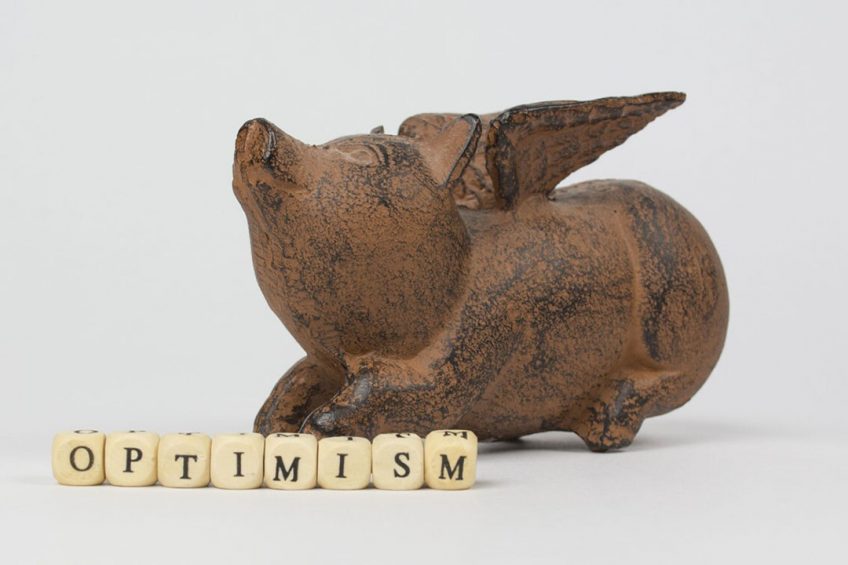Quarterly update: Happy days again for pig producers

The year 2021 has started with a few surprises in the global pork market – prices have risen much more quickly than expected in the USA and Europe – and have fallen rather more quickly in China. Pig market expert Dr John Strak shares his quarterly views.
This recovery began in the USA at the end of January and then spread to Europe in the beginning of March. The contraction of herds and numbers of market pigs in these 2 regions has been significant. In China, the surprise is that the official forecasts of increased pig production seem to have been accurate.
Slaughter numbers have jumped in China (albeit the data immediately after Chinese New Year show a fall) and prices have tumbled. We need to unpack these data in order to see if anything fundamental has changed since I last wrote about the global scene in this column (late December 2020).
Pig market changes in the USA
In the USA it definitely seems that something has changed. As Figure 1 shows, pig prices there took off in February and March. Figure 2 puts the hike into a longer term context – and underlines that this early 2021 price movement is unusually large. Whilst prices would be expected to show a seasonal recovery, the early 2021 bounce in US hog prices goes well beyond that.

This hike in prices is likely to have been supported and encouraged by the cutback in numbers of available carcasses in Europe. That availability has been restricted by reductions in pig numbers and/or the availability of slaughter options when individual plants have been hit by Covid-related restrictions. This latter effect, of course, could not have been foreseen (except under the general view that Covid-19 seems able to mess up all forecasts for all activities).
But, as Table 1 shows, the March census of US pig numbers records significant cuts in the numbers of breeding animals and market pigs in the USA and these will have been the main driver on the supply side for this New Year and the 1st quarter boost in US hog prices.
The reductions in animal numbers reported in the census reflect the low prices and margins in the 3rd and 4th quarters in the USA – and the generally pessimistic experience of prices in the 2nd half of 2020, and outlook for the 1st half of 2021. US farmers, it seems, decided to cut back. On the demand side there doesn’t seem to be any shift in demand from overseas in late 2020/early 2021 that would explain the firming of US prices since US pork exports were slipping back in the 4th quarter of 2020 and January 2021.

Pig prices in Europe
Pig prices were relatively low in Europe in the 4th quarter of 2020 and started 2021 with no sign of a recovery. Two factors drove these low prices and margins: ASF in in the wild boar population in Germany and the subsequent ban on German imports by China, Japan and South Korea; and plant closures where employees were infected with Covid-19. These issues affected prices negatively.
Figure 3 illustrates the behaviour of pig prices in the EU – a fairground roller coaster would be proud to have such a regular pattern of ups and downs. Unsurprisingly, these volatile prices have discouraged producers. Cutbacks in the Dutch herd have occurred through an official scheme to reduce sow numbers (breeding sows were down nearly 12% in the December census) but the really big change is the drop in the large German breeding herd – down by 5.6%, as reported in the December survey.

Spanish herd hardly changed in size
The Spanish herd (the other big player for pig production in Europe) has hardly changed in size. And, although EU pigmeat exports have grown strongly in 2020 there must have been an impact at the margin in late 2020 and early 2021 when the German supply chain was disrupted by ASF and Covid-19. Lockdown measures, of course, have been the main cause of weak prices as the loss of foodservice and hospitality demand has left a hole too big to fill with “new markets”.
The supply cutbacks by pig producers did, by March 2021 put a floor under the market and prices have recovered strongly since then in Europe. Some of that rebound may be supply driven (lack of product) and some may be in anticipation of recovering foodservice demand as lock down measures are eased. The latter observation is based on weak evidence since some parts of Europe are now introducing stricter lockdown policies as Covid-19 attempts a third hurrah. Again, the only thing certain about Covid is uncertainty.
China’s pig herd and ASF
About 3 months ago I noted that it was easy to agree that China’s pig sector had been hit hard by ASF in 2019 (the herd was reported to be down by about 40%).
But it’s equally easy to agree that there is still no general agreement on where China is on it path to recovery. The official line in China is that the total herd and sow numbers are on track to recover to around 90% of normal levels this year. But there are persistent unofficial reports that the incidence of ASF is high, that new variants of ASF exist, and that the spread of the disease is having big effects on production and productivity.
Interpretation of pig price movements
The lack of transparency from the Chinese about ASF and related issues like the level of publicly-owned stocks of pigmeat and the amount of stock building and stock drawdown, makes the interpretation of price movements in China almost impossible. The introduction of new futures contracts for pigs in China is, it seems to me, just another way for people in China to express their love of gambling. The data are not there to support robust forecasting techniques for Chinese pig numbers.

Figures 4 and 5 illustrate the challenge. In Figure 4 China’s pig prices (deadweight) are seen tumbling from their peak and they have approached the 33 yuan/kg level in recent weeks. The volatility in prices suggests a market that truly doesn’t know where it should settle at any particular time – but the underlying trend is downward. The turning point is quite clear in the moving average data.

The official slaughter data is less clear, however. Kill numbers have increased in China and these data, if accurate, correlate with the reports about increases in the breeding herd and the pig inventory. The recent Chinese New Year was associated with higher slaughter numbers and that helped generate a turning point in the underlying trend. If this upturn in kill numbers persists it will be significant.
Pork drawn from the cold stores
One metric that would help us to interpret these price movements is, unfortunately, not available to us. How much pork has been drawn down from the public cold stores of pigmeat in recent months? Or, indeed, how many tonnes of imported pigmeat have been used to rebuild those stocks? The direction and extent of “external” interference in the market by Chinese officials has an important bearing on interpreting price movements. We are left wondering.
At the end of 2020 the global pig price was falling week by week. I expected prices to keep falling for most of the 1st half in 2021 but that gloom has been misplaced. Global prices in the 2nd quarter seem set to rise and rise in the exporting countries.
Figure 6 illustrates that the situation has reversed since the end of last year – the global pig price cycle has turned positive. Importantly, it seems from the discussion above that this change in behaviour is as a result of supply pressures. On the demand side, I said three months ago that “a lot of consumer demand for hospitality and “good times” could return in 2021.”

Source: Whole Hog.
Driving rising prices in the 2nd half of 2021
I concluded that this further influence on the market would drive rising prices in the 2nd half of 2021. There is no reason to change that view. If this were to happen it would be fair to say that 2021 could herald the return of positive margins and significantly higher prices for global pig producers and exporters. Chinese producers will not see a return to the peaks of 2019/20 but they will still be well in the black.
The only qualification to make to all this of course is, Covid-19. Will it be contained? ASF, in China and elsewhere, could also have an impact on prices but that would be on the upside (in general). For the last 2 years we only seem to discuss the viruses – that allows us one prediction that is safe to make. These disease vectors will continue to affect global pork markets throughout 2021. Don’t throw that face mask away yet.











